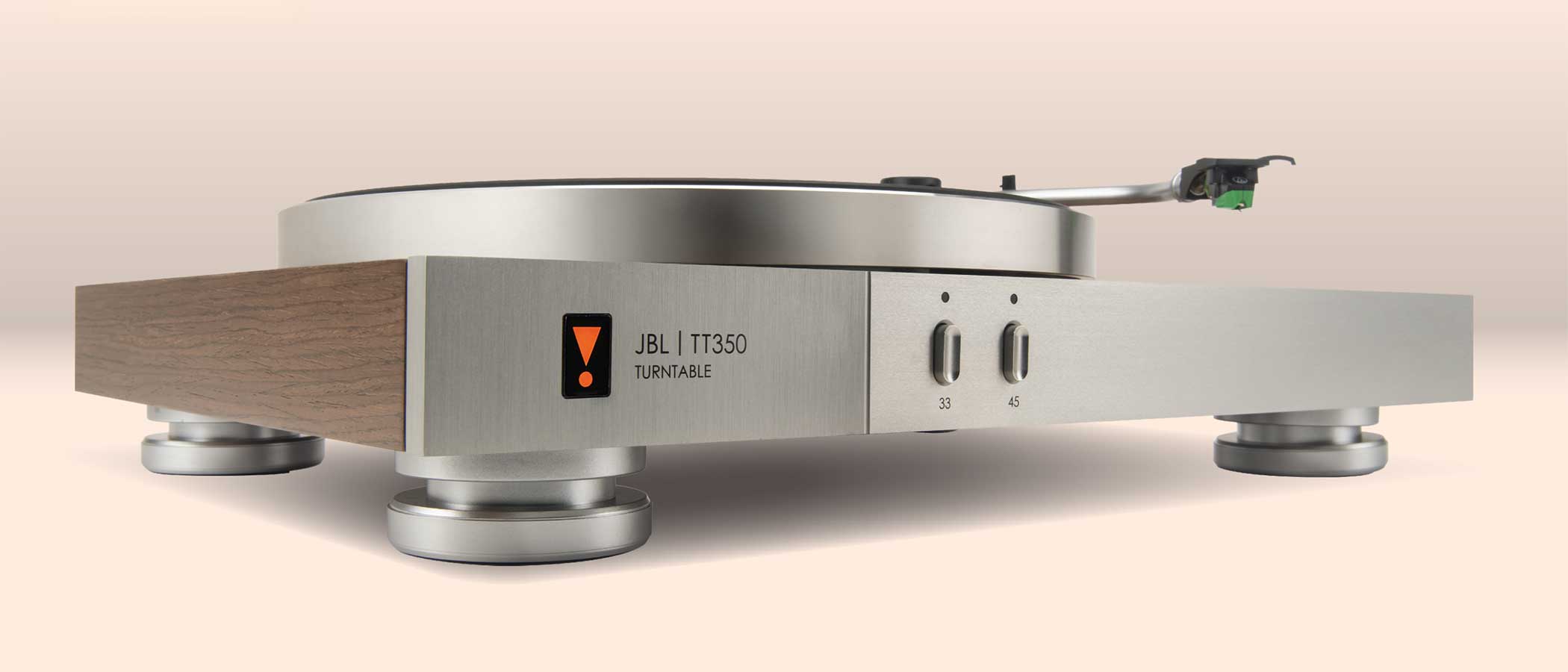Sound+Image Verdict
The TT350 Classic will sell itself on its brand and its lovely looks, but this is a deck that will shine through any high-quality system: easy to set up, easy to use, easy to upgrade later, and a clarity of vinyl sound that ticks all the boxes.
Pros
- +
Clean and neutral sound
- +
Lovely looks
- +
Upgradeable stylus/cart
Cons
- -
Phono-level output only
- -
Prominent silver cankles
Why you can trust What Hi-Fi?
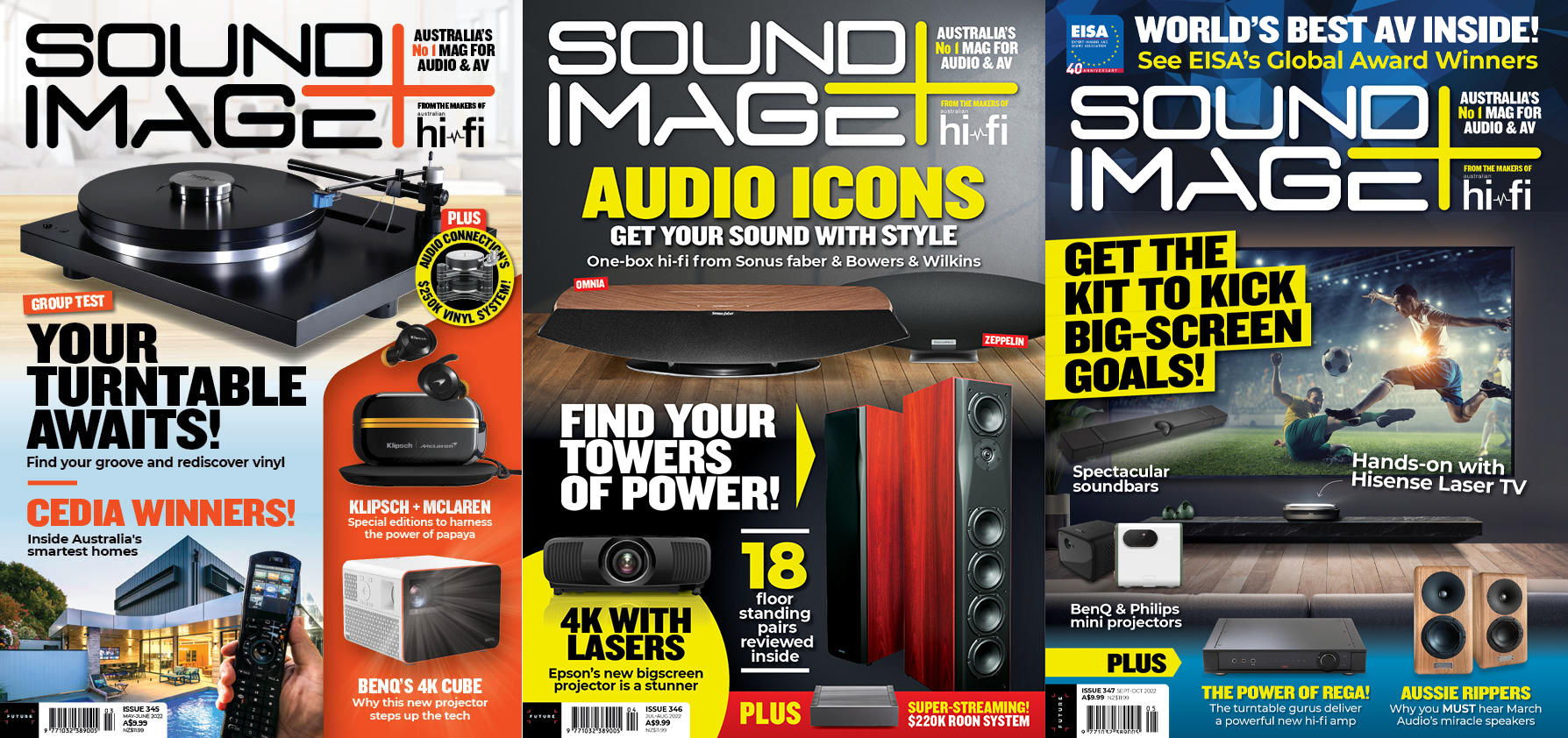
This review originally appeared in Sound+Image magazine, Australian sister publication to What Hi-Fi?. Click here for more information on Sound+Image, including digital editions and details on how you can subscribe. Read What Hi-Fi?'s global, star-rated JBL TT350 Classic review.
We’ve already heard the JBL Spinner BT perform admirably at its price level. But that youth-orientated Bluetooth-equipped turntable was preceded in its announcement, if not its arrival here in Australia, by this more upmarket TT350 Classic. And that makes this TT350 the first-ever turntable released by the Harman/Samsung-owned US marque in all of its 78 years.
It was launched as part of the company’s ‘Classic’ series, specifically with a line-up of JBL separates components around a new SA550 integrated amplifier which purportedly takes its cues from a 1966 SA600 amplifier designed by Bart Locanthi. The Classic range also now includes three sources: an MP350 high-res music streamer, a CD350 CD player – and this, the TT350 Classic turntable.
These electronics follow up on the limited edition SA750 integrated amplifier launched in CES 2021 to celebrate JBL’s 75th anniversary, but the whole range was surely inspired by the success of JBL’s Classic loudspeakers, led by the white-cone 12-inch woofers and Quadrex waffle-cut grilles of the L100 Classics, which are now in a MkII form, and have been joined by the smaller (but still not exactly compact) L82 Classic (eight-inch woofers, also now MkII) and L52 Classic (5.25-inch woofers). The original L100 was a Sound+Image award-winner; we loved the way it sounded, and also how it eschewed the trend of tower-like narrow speaker design, using the Classic tag to justify having those wide and wonderful 12-inch drivers on display.
The idea of all this retro loveliness is surely that you can now buy a complete JBL Classic system, from CD, vinyl and streaming through amplification to the speakers which have long been JBL’s focus.
But that doesn’t limit JBL’s TT350 Classic turntable to life in a JBL system. It performs to a level which should shine in any price-comparable system.

Build & facilities

Type: Direct drive, manual turntable
Speeds: 33⅓rpm, 45rpm
Outputs: phono level
Dimensions (whd): 449 x 155 x 395mm
Weight: 5kg
The TT350 Classic does not appear to be one of those turntables which follows the ‘sheer mass’ approach to vinyl replay, but neither is it skeletally light, like a Rega. So while at 5kg it weighs less than the Cambridge Alva ST, say, at 7.5kg, it is nevertheless half as heavy again as the lesser JBL turntable, the Spinner BT, and yet similarly low-slung (exactly the same height indeed, whether with its smoky Perspex dust cover in place or not).
The pricier turntable does gain a few centimetres in width and depth, however, and it certainly ups the aesthetic delight, managing to look both sleekly modern and nicely ‘classic’, if not quite vintage, at the same time. The plinth is MDF on the inside but you can’t see any of that: the bulk of the turntable is covered with an attractive Natural Walnut (some JBL texts promote this to “a solid walnut clad plinth”, a somewhat ambiguous way of describing the nice veneer). Our sample had gained a rudely emblazoned ‘Not For Sale’ transfer on the bottom right corner.
The latest hi-fi, home cinema and tech news, reviews, buying advice and deals, direct to your inbox.
Meanwhile the front edge gets a nice centimetre-thick slab of aluminium, which probably explains much of the weight difference over the Spinner BT. This frontage has a large backlit ‘exclamation mark’ logo to the left, which lights up red when the deck is in standby and in JBL orange when it is running.
Right of the illuminated logo, beyond a vertical groove in the aluminium fascia, are two buttons, marked 33 and 45, which you press to start the platter spinning once the deck is powered up.
And in a lovely design detail, the aluminium either side of this groove has a differently brushed finish – vertical strokes to one side, horizontal to the other. You barely notice except that the two sections reflect light differently, so creating a lovely contrast.
It’s good to see that JBL exclamation mark appearing in full again – it got tucked away into the top of the ‘J’ on JBL’s modern logo (well, modern since 1967). Before that date, the exclamation mark had been JBL’s prime identifier, a logo created indeed by legendary designer Jerome Gould, who would later create the Pepsi logo, among many others.
The method by which the platter is spun up might be considered the biggest difference between the lower and higher JBL turntables. The lower Spinner BT is belt-drive; this TT350 Classic is direct drive, with the motor driving an idler wheel that directly turns the sub-platter (which is masked partially here under
a sturdy metal plate) and so the main platter.
Not much more than a decade ago, this would have been topsy-turvy in the world of hi-fi, where audiophile decks were all belt-drive, and direct drive was kept for DJs who needed rapid spin-ups. Why was this? The main objection to direct drive was cogging, where there are small bumps in rotational speed as each pole of the motor magnet gives its impetus to the revolution. But in recent years new techniques seem to have reduced the importance of cogging and the objections to direct drive; VPI, Rockport, Technics and others will happily sell you DD turntables upwards of $30k. (The uber-high-end however, is sticking with its belts.)
On the TT350 the rotational speeds gain further security by being locked with a speed sensor “for perfect pitch’ says JBL.
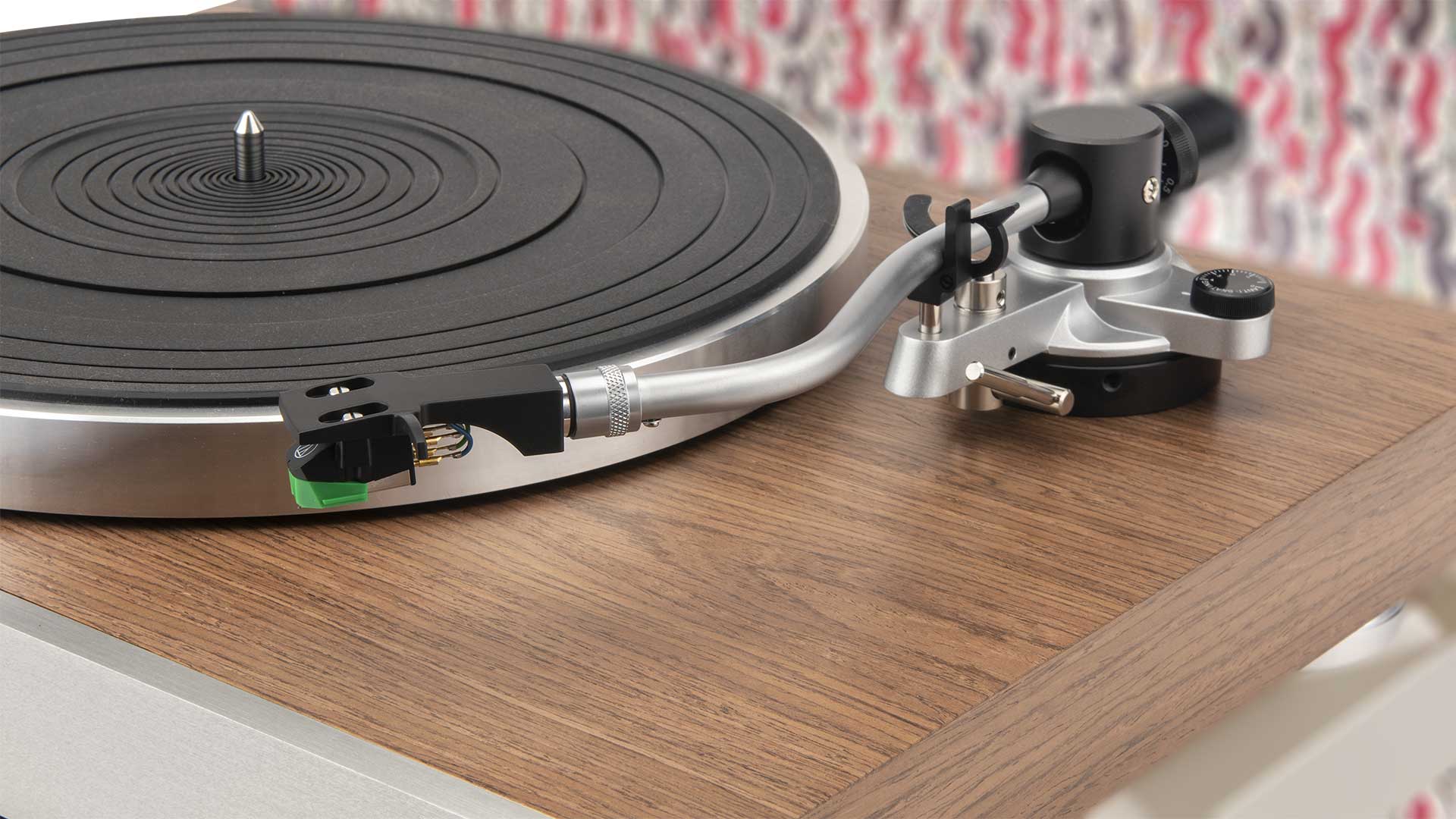
The die-cast aluminium tonearm is S-shaped, nine inches measured direct from pivot to stylus, and it comes with a universal mount ready to receive the supplied removable screw-in headshell with its pre-installed and aligned green Audio-Technica AT-VM95E moving-magnet cartridge, highly regarded for its price (replacement around $80 and styluses around $50). Some turntable philosophies preach against detachable headshells as adding both an extra connection and extra weight where you don't want it, but there's no denying the convenience with which the system here allows owners a whole raft of easy upgrades, temporary or permanent, by simply swapping in a stylus or headshell with one of the higher VM-range styluses. Audio-Technica recently released a bundle of VMs for exactly this purpose, and this JBL turntable would be a perfect deck to reap their benefits.
The TT350 also allows you to adjust the tonearm’s vertical tracking angle, making it possible (if slightly complex) to upgrade to an entirely different size of cartridge.
The outputs here are phono level only, with none of the younger Spinner BT's effusive offerings of a built-in phono stage with line-level output, let alone Bluetooth. No bolted-on digital gubbins here; this is a properly analogue deck.
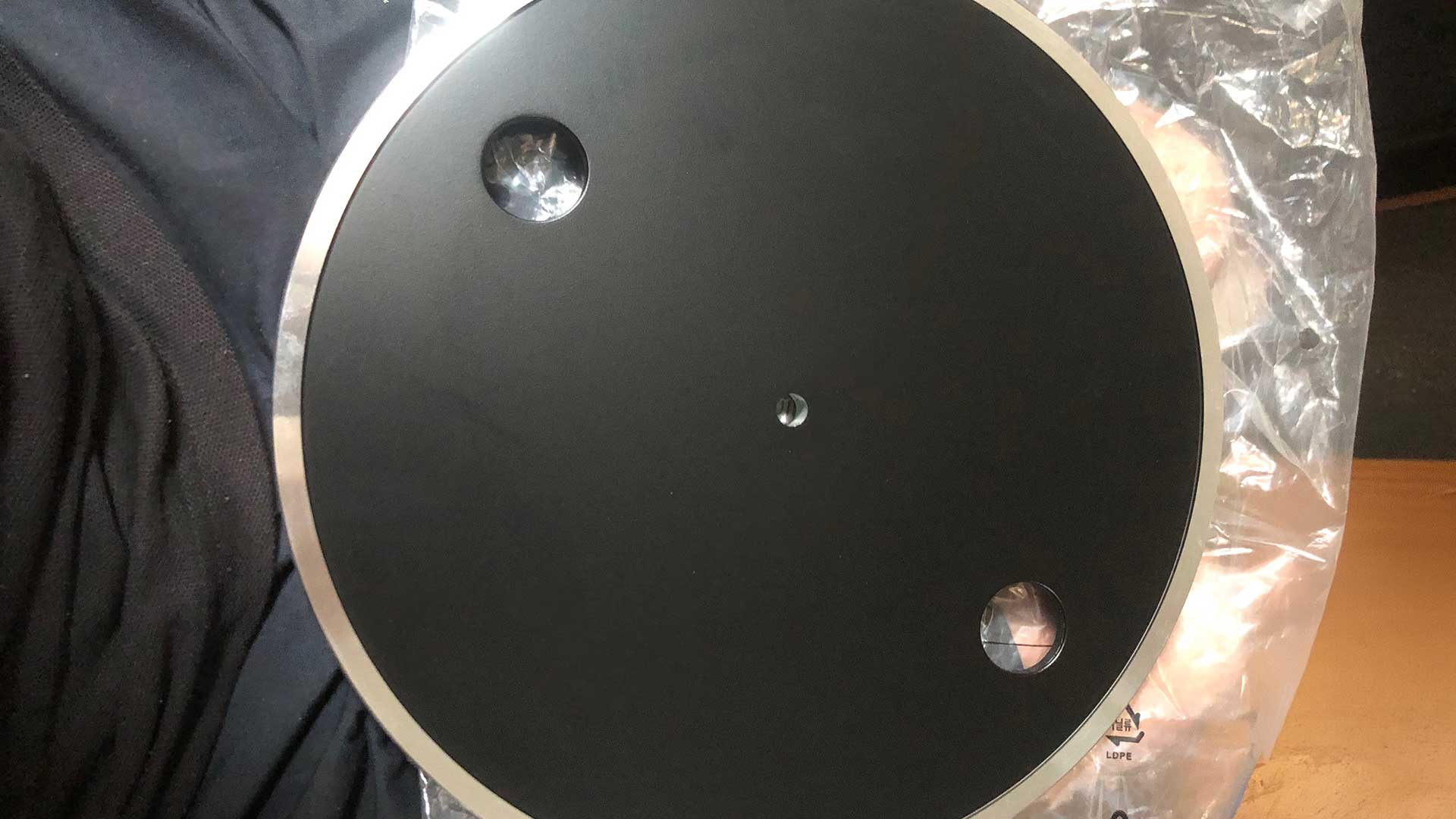
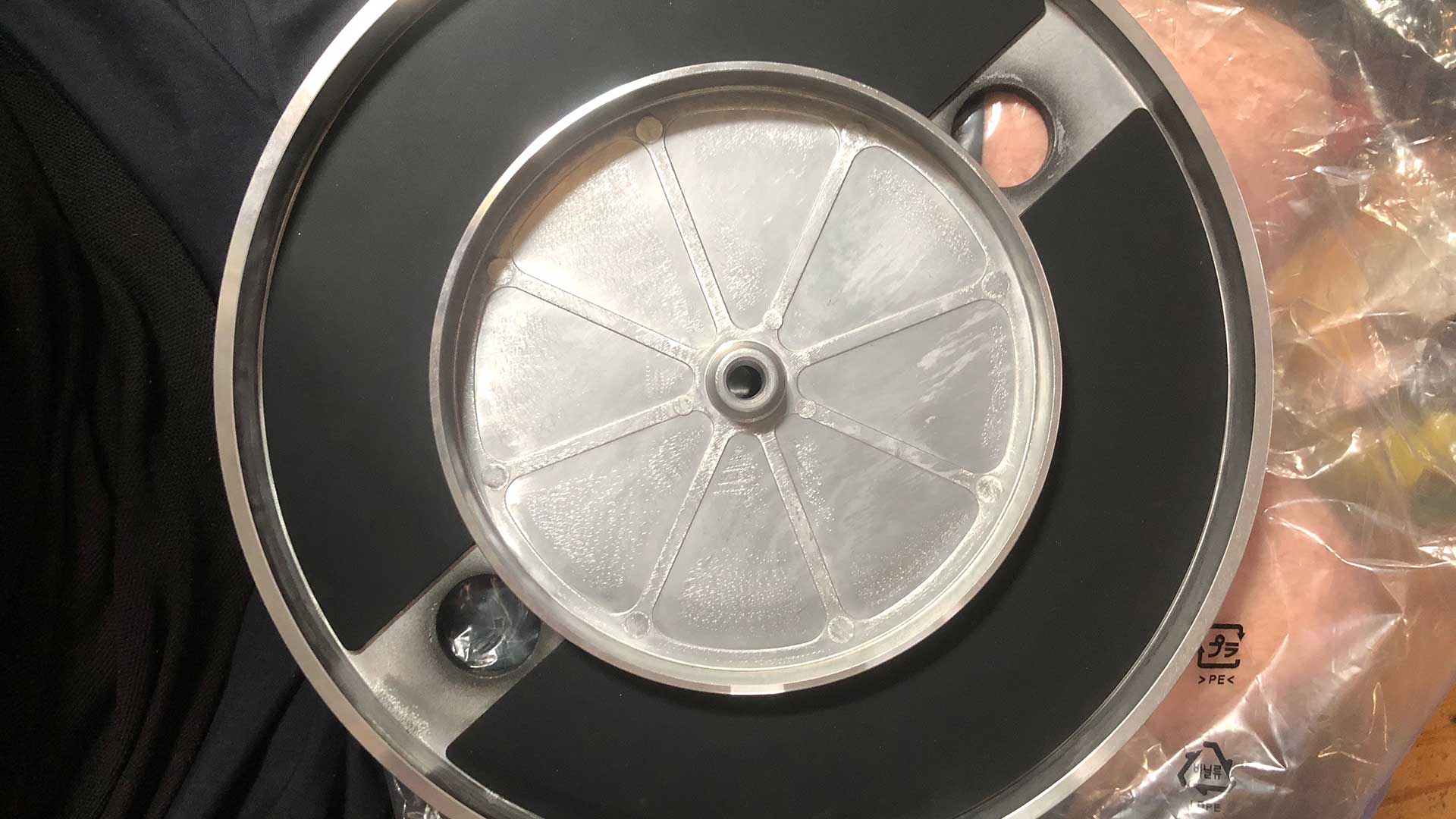

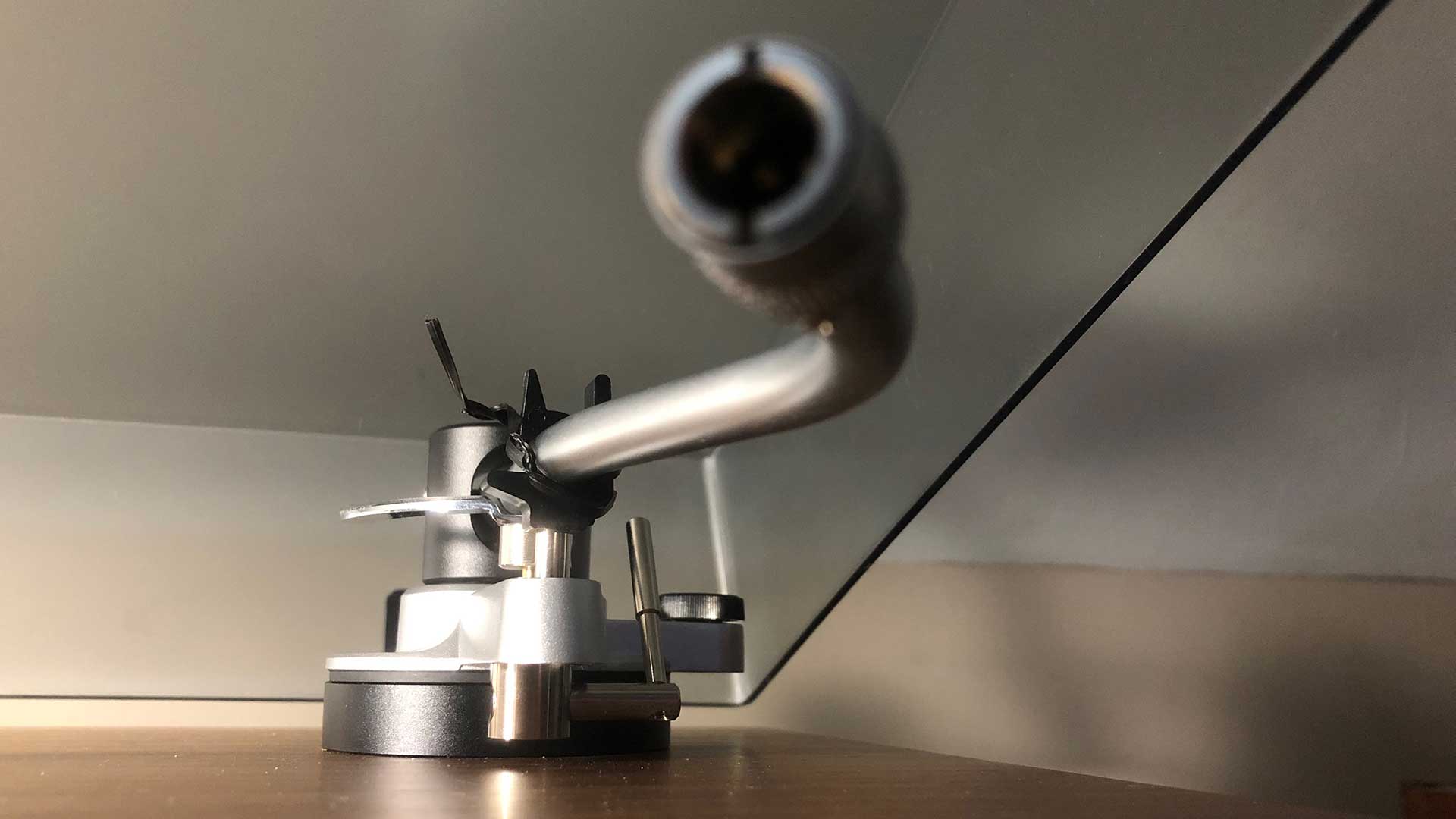
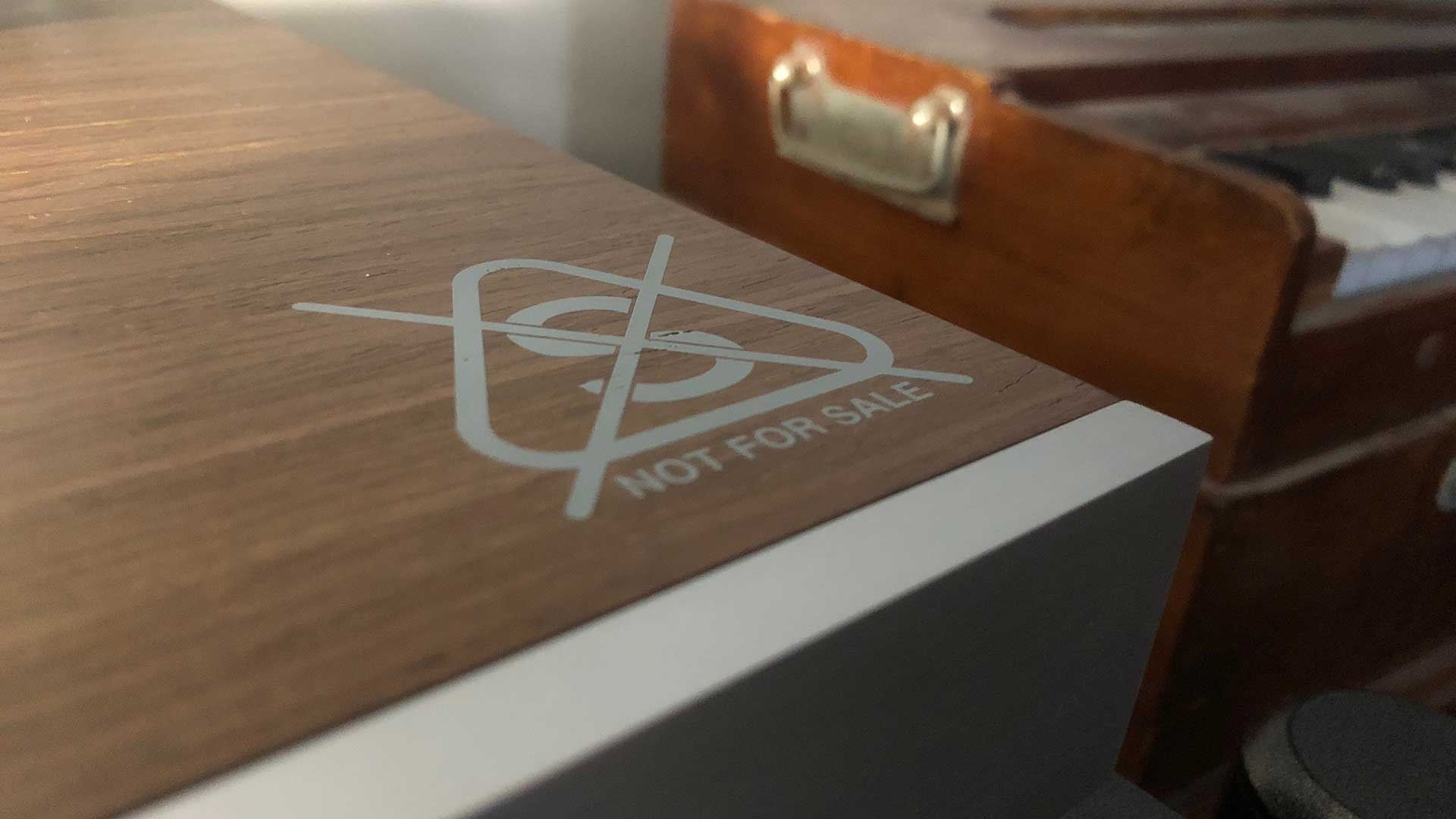
Set-up & performance
It does look lovely, the TT350 Classic, and it’s a breeze to unpack and put together. We did read the manual, but anyone accustomed to turntable set-up won’t need it, and things are simplified still further by the direct drive, as there’s no belt to loop into place (or to move for speed changes). We simply took out all the bits, carefully put the platter and its rubber mat in place, and then tweaked the feet a little to get things completely level in all planes. The feet are nicely adjustable, and damped to help reduce vibration, if rather large, and silver, and occupying not much less height than the main fascia, so very prominent if the deck is up on the top shelf of a rack. They might have been better disguised in black, visually floating the pinth.
We attached the headshell to the arm, pushed the counterweight up until the arm was floating, and then applied the requested 2g of tracking force by rotating the counterweight with its notched weight guide, and then putting the same number onto the anti-skate dial – though a little hard to be entirely accurate, as the notches there are so small.
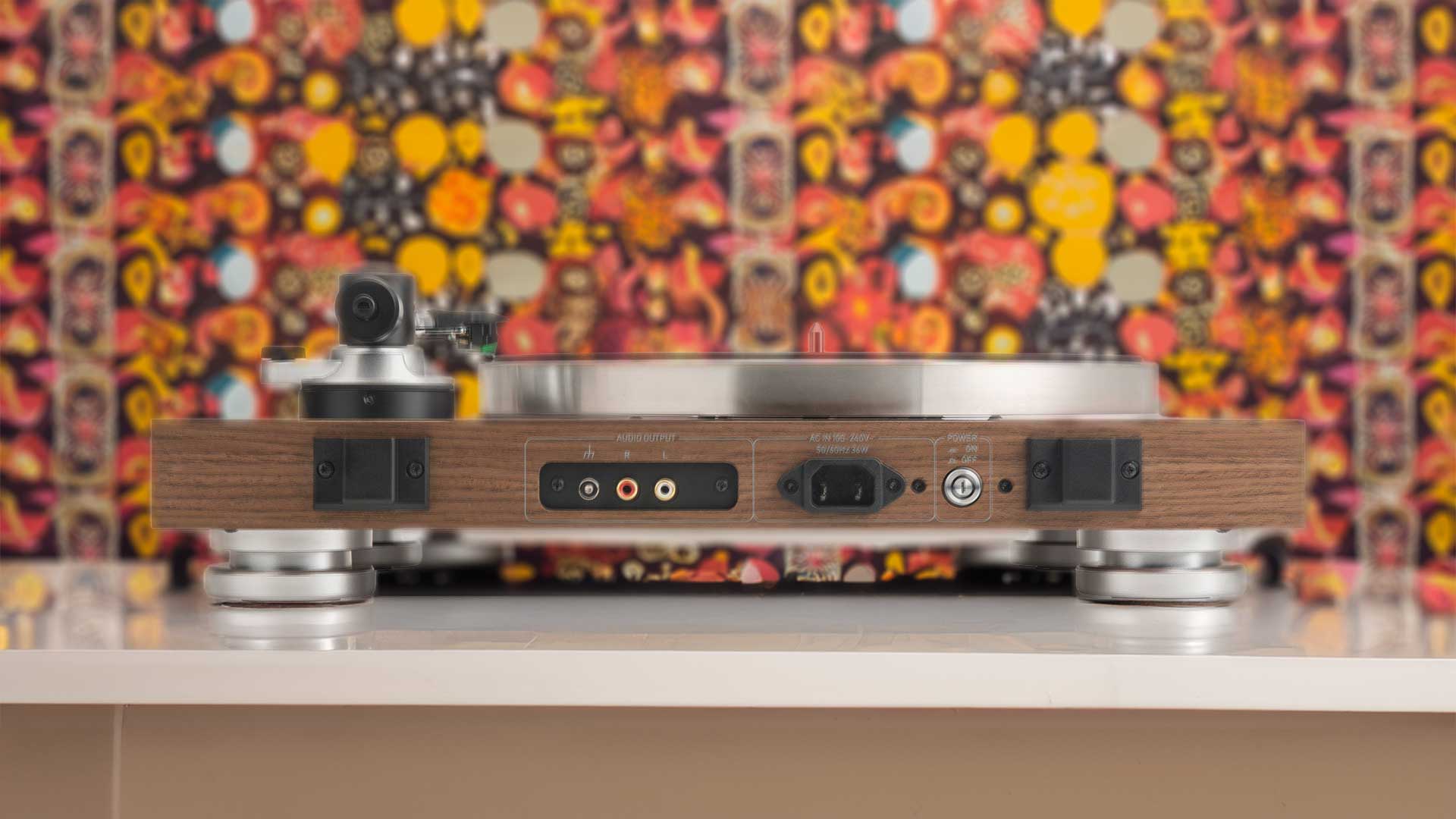
Final tasks: connect the cables, and put on the dust cover – cover hinges can often be a strain, immensely strong things that snap together madly, but these worked well once we had them on the right way round. The dust cover is rather different to that on the JBL Spinner BT – tinted Perspex but angled slightly inwards to create an isosceles trapezoid from the front, and with the corners very tightly radiused to create corners rather than curves, as opposed to the friendlier wide curves around the cover of the Spinner BT, which we rather preferred. But it does the main job of dust and noise isolation, if not entirely, as the cover settles on little buffers that leave a very small gap around the plinth.
We had the TT350 Classic in our system for nearly a month, and it never put a foot wrong in terms of vinyl replay. Surface noise was low, so low on some new LPs that there was no vinyl giveaway at all, and we sometimes forgot the nature of our source and were surprised when the end groove appeared.
A recent vinyl sale had yielded us a pair of bargain 180g Prefab Sprout LPs, and ‘Swoon’ provided a good indicator of the TT350’s spry ability to keep the rhythms tight and punchy as they were dragged from the grooves: a punchy bass kick for I Never Play Basketball Now, a perfectly snappy but non-intrusive snare, and impressive clarity as the layers of guitar built up.
Nor was this snappiness coming at the cost of tonal leanness; the lush landscape of Couldn’t Bear To Be Special was open yet rich, spacious yet full, the bass guitar and synth solid – not massive in proportion, but even-handedly delivered without any hint of bloat.
Speed was good under that sensor regimen; the RPM app measured it at -0.43% for speed (fractionally slow) with respectable wow and flutter of 0.25%. Stability in the moment seemed beyond reproach; our standard piano tester of Keith Jarrett’s Flying Pt 1 was not only rock-steady even on long-held notes, the clarity of sound showed the invested extra dollars here: we heard pedal movements over the intro that we haven’t noticed before, and we’ve played this track on every turntable through our offices in the last 20 years!
Jazz or rock, classical or dance, it didn’t matter – nor should it, since a good turntable doesn’t care about genre: a well-designed system delivering a tightly-timed neutral sound serves everything, and that’s what the TT350 Classic brought to our music.
One extra bonus: that rubber mat underhangs the edge of the vinyl by a few millimetres, enough to make removing the LP foolproof – no pulling and accidental fingernail scratches here!
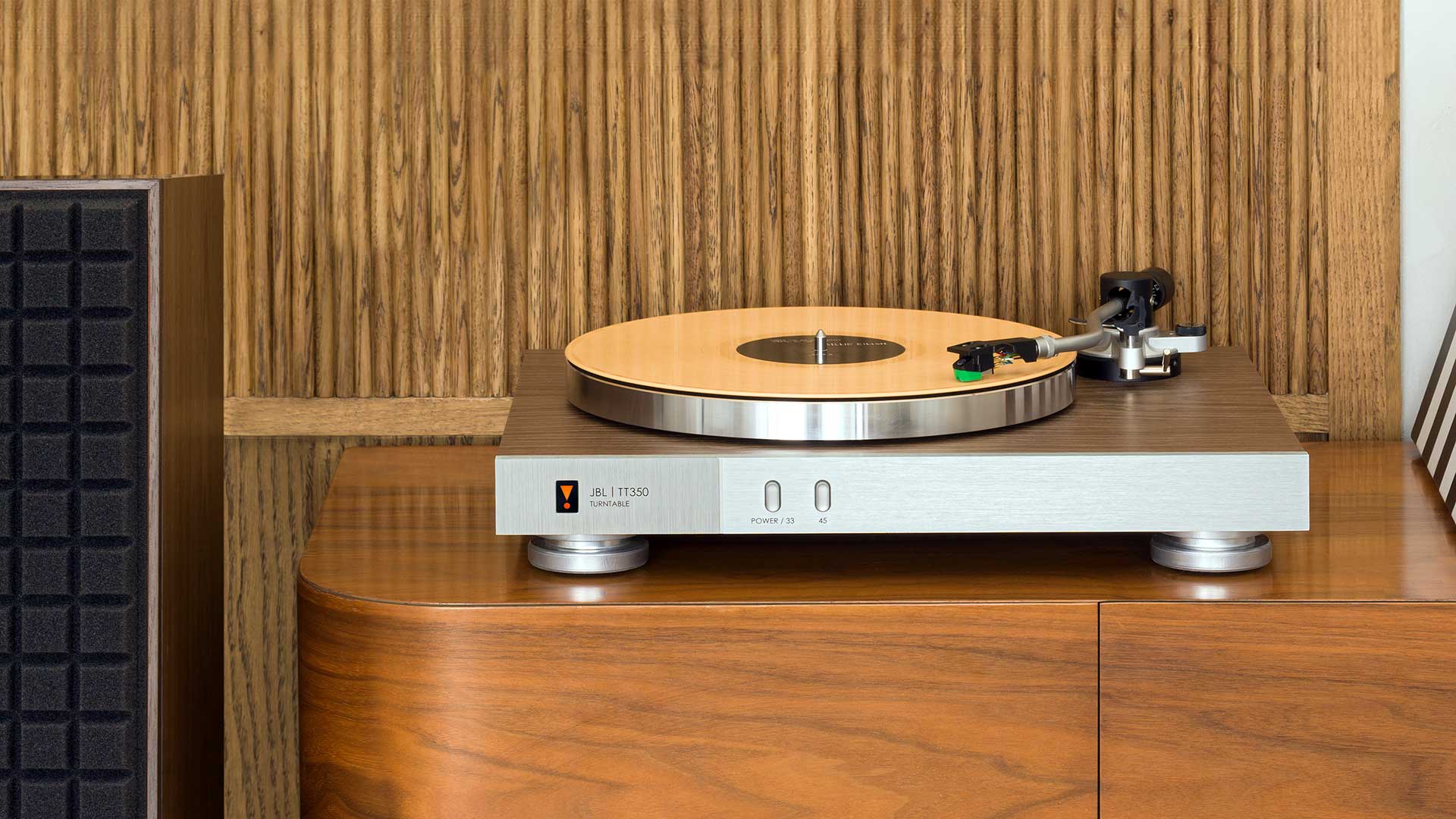
Verdict
It seems likely that the TT350 Classic will sell itself on its brand and its lovely looks. As it happened, our usual Sound+Image reference system is equipped with JBL speakers that have 12-inch woofers, and we can attest to the system match there.
But this is a deck that will shine through any high-quality system: easy to set up, easy to use, and with its easy-to-upgrade Audio-Technica cartridge providing a clarity of vinyl sound that ticks all the boxes for speed, tone and straightforward wonderful music. We were rather slow to pack it up for return.

Jez is the Editor of Sound+Image magazine, having inhabited that role since 2006, more or less a lustrum after departing his UK homeland to adopt an additional nationality under the more favourable climes and skies of Australia. Prior to his desertion he was Editor of the UK's Stuff magazine, and before that Editor of What Hi-Fi? magazine, and before that of the erstwhile Audiophile magazine and of Electronics Today International. He makes music as well as enjoying it, is alarmingly wedded to the notion that Led Zeppelin remains the highest point of rock'n'roll yet attained, though remains willing to assess modern pretenders. He lives in a modest shack on Sydney's Northern Beaches with his Canadian wife Deanna, a rescue greyhound called Jewels, and an assortment of changing wildlife under care. If you're seeking his articles by clicking this profile, you'll see far more of them by switching to the Australian version of WHF.
